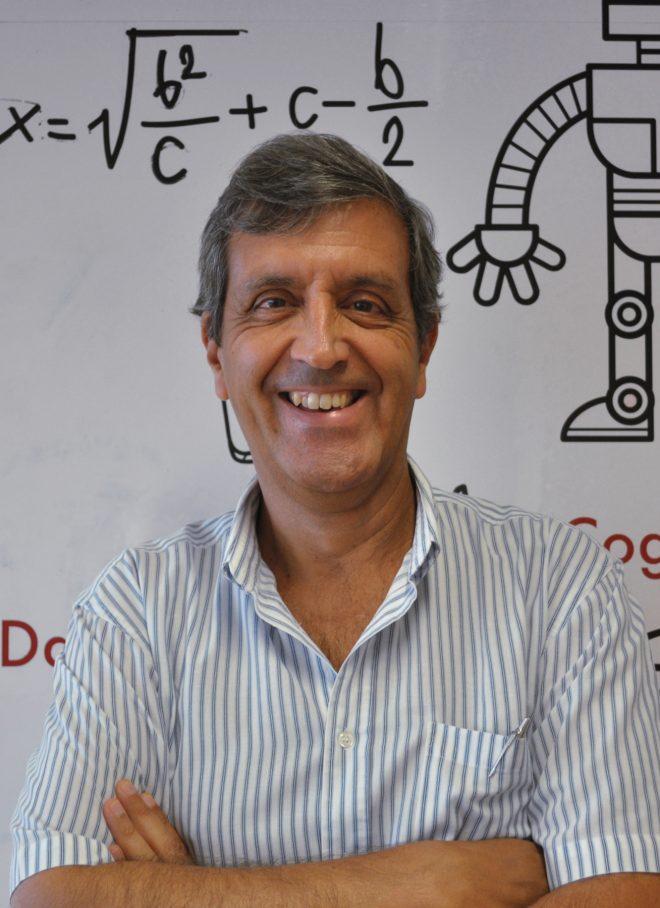| Acronym | BioInstBots |
|---|---|
| Name | From Bio-Inspired to Institutional-Inspired Collective Robotics |
| Funding Reference | FCT - PTDC/EEA-CRO/104658/2008 |
| URL | http://mediawiki.isr.ist.utl.pt/wiki/From_Bio-Inspired_to_Institutional-Inspired_Collective_Robotics |
| Dates | 2010-02|2013-01 |
| Summary | We seek to study and formalise laws that govern collective systems with the aim of synthesising systems of relatively simple robots that display complex behaviour individuals through local interactions. In order to achieve this endeavour, we will study both biological systems and social systems. From biology, we will focus on cell populations. A single cell is relatively simple when compared with a cell population such as a biological creature. While from sociology, we will focus on institutional economics (at the macro level, the agents can be treated as simple entities, no matter how sophisticated they may be at the micro level). Our objective is to bring together theories, ideas and inspiration from institutional economics and cell biology under a common formal framework for large robot populations modelling and analysis. In recent years, the predominant inspiration for collective robotics modelling analysis and design has been originated from biology. In the case of swarm robotics (SR), inspiration is taken from studies of the self-organizing capabilities displayed by social insects such as ants. Drawing inspiration from these types of natural systems, SR concepts have been applied to swarms of robots with limited sensing and actuation capabilities, performing relatively simple cooperative tasks such as foraging, coverage or odour tracking. Despite the reasonable success of SR in relatively simple applications, there is no systematic method to design individual behaviours at the micro level, including their interaction actions for the desired collective behaviour to at the macro level to emerge; in fact, the emergent nature of the collective behaviour is a principle that precludes goal- or performance-oriented design. Economics-inspired experiences within multiagent systems suggest that merely emergent processes, and simple local interactions between individuals sometimes lead to inefficient solutions to collective problems. Economics can provide some insights on how to deal with large collective systems. Institutional Economics (IE) takes institutions coordination devices deliberately set up by agents or evolved out of interaction as key elements of any sophisticated society. Notwithstanding the lessons we can learn from IE, its opposition to naturalistic approaches can lie in the way to a unified (bio- and institutional-inspired) framework to the analysis and synthesis of collective systems. Considering other domains in the biological landscape can be of help here. In biology, epigenetics refers to heritable phenotypic variation without genetic variation. An epigenetic approach can provide a new common ground for genetic and non-genetic views on the micro-macro link problem. Our working hypothesis regarding epigenetics is that collective systems have a state space with multiple stationary states, where the actual repertoire of inputs and outputs displayed by each agent (cell or robotic system) in a given instant, as well as the way in which these are wired within the agent (gene regulatory network in cells, and software/hardware in robotic systems), can be different even in similar or identical environments. On the basis of this hypothesis, new methods for controlling collectives, both at micro and macro levels, can be developed. By the end of this project, we will aim at providing novel cooperation and coordination algorithms and methods for collective robotics based on a formal framework for collective systems. More specifically, we will import concepts from Biology and Economy and develop probabilistic mathematical models of the robot population dynamics under the different approaches (bio- and institutionally-inspired, and merged). This will allow us to gain further insight on their differences and similarities, relative merits, and adequateness for particular classes of systems, by predicting their performance in non-tested scenarios. Furthermore, though the project focus is on bringing multidisciplinary inspiration to design better robot collectives, we expect to provide further insight on cell biology and institutional economics mathematical modeling as a side effect. |
| Research Groups |
Intelligent Robots and Systems Group (IRSg) |
| Project Partners | IIGC/FCG (PT) |
| ISR/IST Responsible | |
| People |



